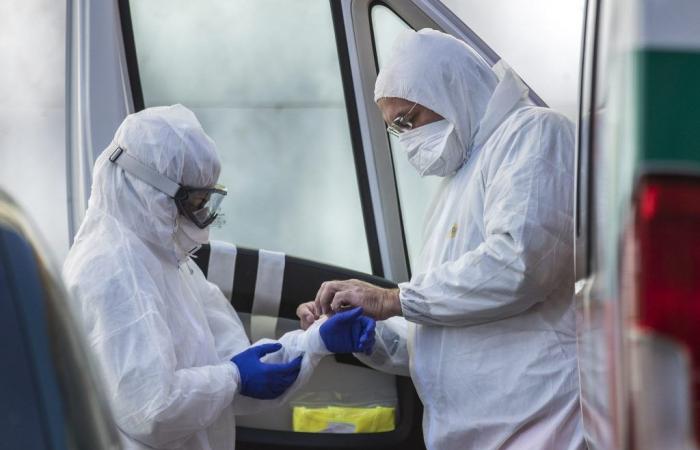Dr. Robert Redfield, virologist and former director of the CDC, has clear ideas about the risks of the avian influenza virus. According to the expert, in fact, a pandemic is not a question of if, but when. Furthermore, the mortality rate of the infection could reach 50%; this means that the virus could kill one in two infected people. A catastrophe much worse than COVID-19.
There pandemic Of bird flu It’s not a question of if, but when. And what’s most worrying is that when it hits, it will have an impact much worse from the COVID-19with a mortality which could be between 25 and 50 percent. In practice, the virus would kill one person for every four or even every two infected. A massacre. This, in a nutshell, is the doctor’s thoughts Robert Redfieldvirologist and former director Centers for Disease Control and Prevention (CDC) remained in office between 2018 and 2021. The scientist gave a series of interviews after the announcement of the first death in Mexico associated with avian influenza, affected by the strain H5N2. However, it is not this that worries the experts, but rather theH5N1avian influenza virus ad high pathogenicity (HPAI) which for some years has been causing millions of deaths among wild and domestic birds.
Currently the risk for humans is considered Bass by health authorities, because the avian influenza virus is not considered “good” at infecting people, but the pathogen continues to evolve and affect more and more mammal species. Dogs, cats, foxes, mustelids, bears, pinnipeds and, more recently, even cattle, with numerous cases in dozens of farms in the United States. This is news that has taken the scientific community by surprise because i virologists they didn’t think it was possible that the avian influenza virus could infect cows. As stated to Fanpage.it by Professor Ilaria Capua, these animals were considered “resistant”. But something must have changed in the virus and allowed this too species jump. The spillover, the leap from species to man, has actually already occurred in man for some time; Since the H5N1 virus was first isolated in 1996 at a waterfowl farm in China, there have been approximately 900 human cases, with a mortality rate of 50 percent, as highlighted by an article from Yale University School of Medicine. Fortunately the three cases associated with dairy cattle have generally been mild, although one has shown symptoms of a’acute respiratory infectionas indicated by the CDC.
Professor Scott Roberts, an infectious disease specialist at the prestigious US university, stated that the 50 percent mortality rate could be a overestimatedue to the fact that many people may have caught an infection without symptoms or just a mild form of the disease (paucisymptomatic), going “under the radar” and causing the mortality of the virus to soar. What is certain, as stated to Fanpage.it by Professor Capua, is that these avian viruses already have difficulty passing from another animal to human beings and are even less good at making the transition from human to human. But as indicated, the H5N1 virus continues to mutate and evolve, also favored by a process of replenishment (in which two viruses give rise to a new pathogen with genes in common) catalyzing the pandemic risk. According to Dr. Robert Redfield, as indicated, it’s not a question of if, but when. “I really think it’s very likely that sooner or later we’re going to have a bird flu pandemic, it’s not a question of if, it’s more a question of when we’re going to have a bird flu pandemic,” he told NewsNation.
Ilaria Capua explains avian flu: “It had never infected cattle, we need to understand what happened”
The element that causes greatest concern is precisely that relating to mortality, which could be between 25 and 50 percent according to the American scientist. To make a comparison with the pandemic COVID-19, before the availability of vaccines according to the US CDC it was 1.7 percent. With avian flu there is a risk of one victim for every four or two infected people, a massacre that could recall the pandemic Spanish flu of 2018 (also triggered by an avian virus). According to experts, to become good at infecting people and allowing human-to-human transmission, the H5N1 virus would have to undergo mutations in five amino acids, which would make it capable of effectively attaching to the receptor on human cells. “Once the virus acquires the ability to attach to the human receptor and then pass from human to human, that’s when you will have the pandemic. And like I said, I think it’s just a matter of time,” Dr. Redfield reiterated.
At the moment there is no imminent risk, but looking ahead to the coming years and decades, it is clear that a certain apprehension is spreading among at least some of the professionals. The World Health Organization (WHO) has also spoken several times about a future pandemic. We are already starting to “get our hands on” against avian flu by producing and ordering the first doses of vaccine, the Seqirusthe only one approved for the prevention ofzoonotic avian in the European Union. The EU has reserved hundreds of thousands of doses initially intended for risk categories (veterinarians, farmers), while Finland is already thinking about a campaign to protect the vulnerable population. The traditional vaccine is developed in chicken eggs and this detail, in the presence of a potential avian pandemic, could be a problem; This is why we are focusing a lot on a technology mRNAthe one that allowed us to overcome the most critical phase of the Covid pandemic.







